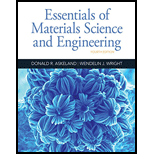
(a)
Interpretation:
The amount, composition and hardness of material at
Concept Introduction:
Material hardness is the property of a metal due to which material resist the plastic deformation. Plastic deformation means material deformation which undergoes non-reversible change. Hardness is the property of any material which process stiffness resistance to bending, scratching or cutting. Hardness is not constant or fixed for all material, but it depends upon strength and plasticity of metal. Material hardness is expressed in terms of hardness number.
Answer to Problem 12.102P
The composition, hardness and amount are
Explanation of Solution
Given:
Graph showing

As shown in the given diagram, at the line
As from the figure, the effect of hardness of martensite in steel, the hardness of martensite at
Where,
Put, the values in lever rule,
(b)
Interpretation:
The amount, composition and hardness of material at
Concept Introduction:
Material hardness is the property of a metal due to which material resist the plastic deformation. Plastic deformation means material deformation which undergoes non-reversible change. Hardness is the property of any material which process stiffness resistance to bending, scratching or cutting. Hardness is not constant or fixed for all material, but it depends upon strength and plasticity of metal. Material hardness is expressed in terms of hardness number.
Answer to Problem 12.102P
The composition, hardness and amount are
Explanation of Solution
From the given figure, draw a line at
The lever rule is given by,
Where,
Put the values in lever rule
(c)
Interpretation:
The amount, composition and hardness of material at
Concept Introduction:
Material hardness is the property of a metal due to which material resist the plastic deformation. Plastic deformation means material deformation which undergoes non-reversible change. Hardness is the property of any material which process stiffness resistance to bending, scratching or cutting. Hardness is not constant or fixed for all material, but it depends upon strength and plasticity of metal. Material hardness is expressed in terms of hardness number.
Answer to Problem 12.102P
The composition, hardness and amount are
Explanation of Solution
Calculate the amount of martensite from the heating temperature
Therefore at
Applying lever rule at a heating temperature
Put,
Therefore,
The effect of carbon content on the hardness of martensite in steel, the amount of hardness for martensite composition
(d)
Interpretation:
The amount, composition and hardness of material at
Concept Introduction:
Material hardness is the property of a metal due to which material resist the plastic deformation. Plastic deformation means material deformation which undergoes non-reversible change. Hardness is the property of any material which process stiffness resistance to bending, scratching or cutting. Hardness is not constant or fixed for all material, but it depends upon strength and plasticity of metal. Material hardness is expressed in terms of hardness number.
Answer to Problem 12.102P
The composition, hardness and amount are
Explanation of Solution
From the diagram, the eutectoid portion of
r =0.30%c
Applying lever rule, calculate the composition of martensite at them
Calculate the amount of hardness at temperature
From the figure, the effect of carbon content hardness at
Want to see more full solutions like this?
Chapter 12 Solutions
Essentials Of Materials Science And Engineering
 MATLAB: An Introduction with ApplicationsEngineeringISBN:9781119256830Author:Amos GilatPublisher:John Wiley & Sons Inc
MATLAB: An Introduction with ApplicationsEngineeringISBN:9781119256830Author:Amos GilatPublisher:John Wiley & Sons Inc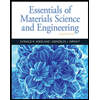 Essentials Of Materials Science And EngineeringEngineeringISBN:9781337385497Author:WRIGHT, Wendelin J.Publisher:Cengage,
Essentials Of Materials Science And EngineeringEngineeringISBN:9781337385497Author:WRIGHT, Wendelin J.Publisher:Cengage,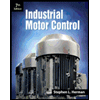 Industrial Motor ControlEngineeringISBN:9781133691808Author:Stephen HermanPublisher:Cengage Learning
Industrial Motor ControlEngineeringISBN:9781133691808Author:Stephen HermanPublisher:Cengage Learning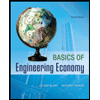 Basics Of Engineering EconomyEngineeringISBN:9780073376356Author:Leland Blank, Anthony TarquinPublisher:MCGRAW-HILL HIGHER EDUCATION
Basics Of Engineering EconomyEngineeringISBN:9780073376356Author:Leland Blank, Anthony TarquinPublisher:MCGRAW-HILL HIGHER EDUCATION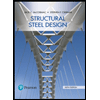 Structural Steel Design (6th Edition)EngineeringISBN:9780134589657Author:Jack C. McCormac, Stephen F. CsernakPublisher:PEARSON
Structural Steel Design (6th Edition)EngineeringISBN:9780134589657Author:Jack C. McCormac, Stephen F. CsernakPublisher:PEARSON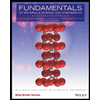 Fundamentals of Materials Science and Engineering...EngineeringISBN:9781119175483Author:William D. Callister Jr., David G. RethwischPublisher:WILEY
Fundamentals of Materials Science and Engineering...EngineeringISBN:9781119175483Author:William D. Callister Jr., David G. RethwischPublisher:WILEY





